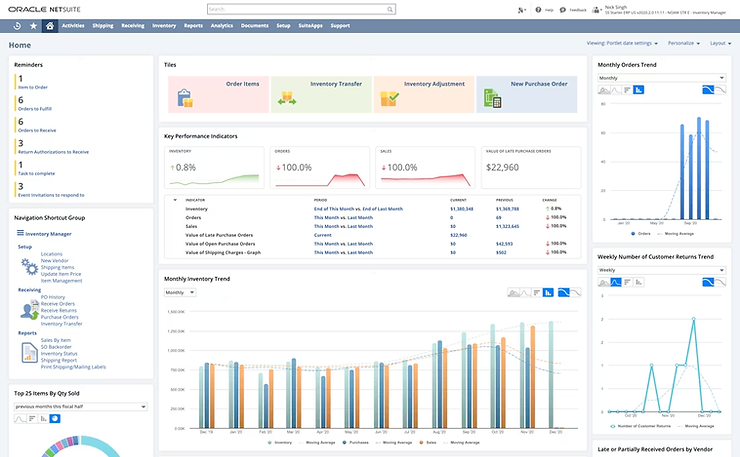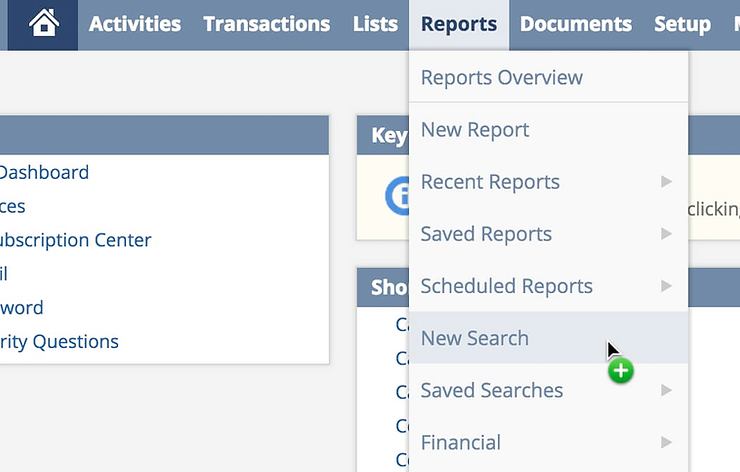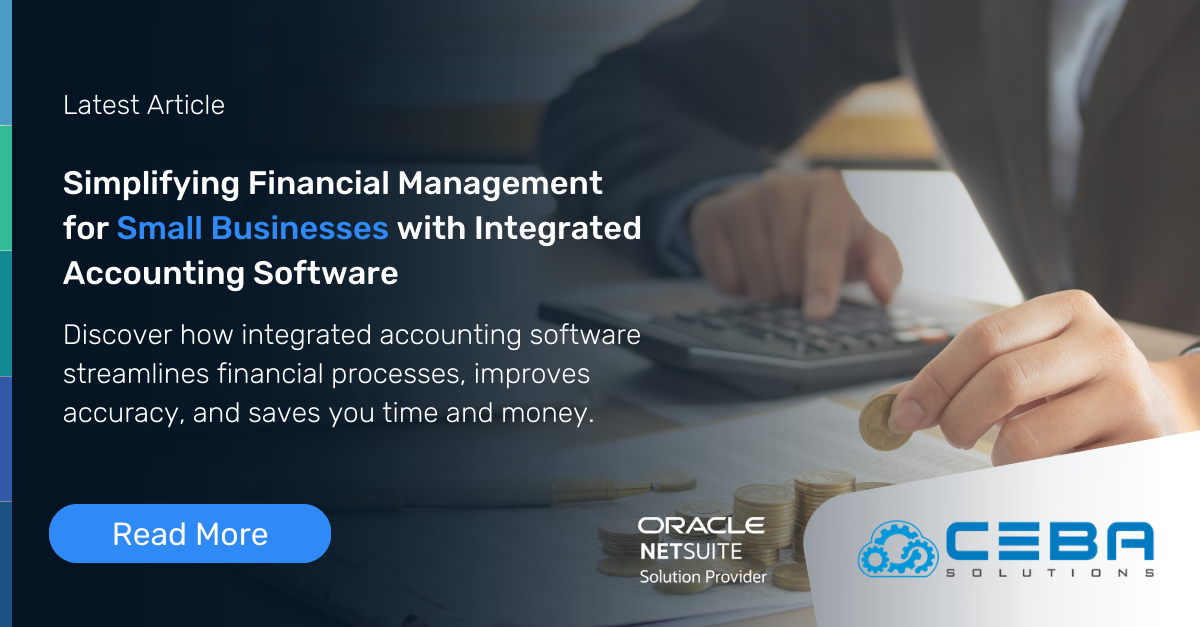NetSuite Inventory Aging Report: Uses, Interpretation and Generation Explored

The NetSuite Inventory Aging Customized Report is a powerful report that allows businesses to gain insights into the age of their inventory and make informed decisions regarding inventory management. This report provides a comprehensive overview of inventory items, their quantities, values, and the length of time they have been in stock. By analyzing this information, businesses can identify slow-moving or obsolete items, optimize inventory levels, and improve cash flow. This article will explore the importance of inventory aging, how to generate the NetSuite Inventory Aging Report, interpret its results, and provide best practices for utilizing the report effectively.

Why is Inventory Aging Reporting Important?
Inventory aging is an essential aspect of inventory management that holds significant importance for businesses. This analysis provides valuable insights into the dynamics of a company's stock, empowering them to make informed decisions based on data-driven information. Let's delve deeper into the reasons why inventory aging is crucial:
Identify slow-moving items
The inventory aging report allows businesses to identify items that are moving slowly. These items tie up valuable resources and occupy warehouse space, which can have a negative impact on cash flow. By pinpointing slow-moving items, businesses can take appropriate actions to address the issue. They may choose to implement promotional strategies to boost sales or consider liquidation options to free up space and capitalize on the value locked in these items.
Recognize obsolete items
Outdated or obsolete items can become a financial burden if not dealt with promptly. By analyzing the inventory aging report, businesses can identify items that have become obsolete or are at risk of becoming so. This insight enables them to adjust their procurement strategies, preventing overstocking of items that are losing demand or becoming outdated. By proactively managing obsolete items, businesses can minimize financial losses and avoid tying up valuable resources in products that no longer generate revenue.

Download this article to read later or share with a colleague.
NetSuite Inventory Aging Report: Uses, Interpretation and Generation Explored
Download Here!
Optimize inventory levels
The inventory aging report provides businesses with valuable information to optimize their inventory levels effectively. By analyzing the age of inventory items, businesses can determine the appropriate stock levels for different products. They can ensure they have sufficient quantities of fast-moving items to meet customer demand promptly while minimizing excess inventory that ties up working capital. Optimizing inventory levels helps improve order fulfillment rates, reduces carrying costs, and enhances overall customer satisfaction.
Improve cash flow
Efficient management of working capital is crucial for the financial health of any business. Understanding the age of inventory enables businesses to make strategic decisions that can improve cash flow. By reducing the holding time for slow-moving or obsolete items, businesses can unlock tied-up capital and allocate resources more effectively to revenue-generating activities. This optimization of cash flow enhances liquidity and provides businesses with greater flexibility to invest in growth opportunities, manage expenses, or address other critical financial obligations.
Inventory aging is an essential aspect of inventory management that holds significant importance for businesses. This analysis provides valuable insights into the dynamics of a company's stock, empowering them to make informed decisions based on data-driven information. - Zabe Siddique, President, CEBA Solutions
How to Generate a NetSuite Inventory Aging Report
The NetSuite ERP System offers a wide range of functionalities, including inventory management. However, it does not provide a standard inventory aging report out of the box. However, we can utilize a workaround to generate an inventory aging report using saved searches.

Creating a Saved Transaction Search
To create an inventory aging report in NetSuite, we will leverage the power of saved searches. Saved searches allow you to define specific criteria and generate custom reports based on those criteria. Here are the steps to create a saved transaction search for an inventory aging report:
Navigate to Saved Searches
Go to Lists > Searches > Saved Searches and click on New to create a new saved search.
Select Transaction
Scroll down and choose Transaction from the available search types. This will be the foundation for our inventory aging report.
Define Criteria
Give your search a meaningful title and proceed to the Criteria tab. Here, you will define the criteria for filtering transactions to generate the report. Include criteria such as inventory location, item record, and transaction types that impact inventory.
Add Additional Criteria
To ensure accuracy, you can further refine your search by adding criteria related to asset accounts. Filter the rows with the same asset account in the item record and the account used in the transaction.
Include Posting Criterion
To focus solely on transactions that affect inventory, include the criterion Posting: Is True. This will ensure that only relevant transactions are included in the search.
Configure Results
Move to the Results tab to specify the columns you want to include in the search results. These columns will provide the necessary information for analyzing your inventory aging.
Adding Location Filter
If your organization operates multiple locations and you want to generate inventory aging reports specific to each location, you can add a location filter to the saved search. This optional step allows you to easily retrieve the age of inventory or create reports for individual locations.
Analyzing the Search Results
Once you have completed the setup of your saved search, save and run it to generate the inventory aging report. The search results page will display the relevant columns and information based on the criteria and filters you specified. You can further filter the results by selecting a specific location in the filter area. Clicking on an item within the search results will provide a detailed view of the associated transactions, enabling you to dive deeper into the data and analyze the movement of your inventory effectively.
Understanding the Inventory Aging Report
The NetSuite Inventory Aging Report provides detailed information about the age of inventory items and their corresponding quantities and values. Let's explore the key aspects of this report.
Aging Buckets and Their Significance
The report categorizes inventory items into aging buckets based on the length of time they have been in stock. Common aging buckets include 0-30 days, 31-60 days, 61-90 days, and so on. Each bucket represents a specific time range, allowing businesses to assess the aging distribution of their inventory.
Items Included in the Report
The inventory aging report includes all inventory items within the specified parameters, such as item ID, description, location, quantity on hand, and value. This comprehensive information helps businesses gain a holistic view of their inventory.
Quantity and Value Information
For each item listed in the report, the inventory aging report provides both the quantity on hand and the value. This information allows businesses to understand the financial implications of their inventory and make strategic decisions accordingly.
Interpreting the Results
Once you have generated the NetSuite Inventory Aging Report, it's essential to interpret the results effectively. Here are some key insights you can gain from the report:
Identifying Slow-Moving and Obsolete Items
By reviewing the inventory aging report, you can identify items that have been in stock for an extended period. These items may indicate slow-moving inventory or potential obsolescence. Analyzing these items can help you devise strategies to promote their sales, explore liquidation options, or adjust procurement strategies.
Assessing Inventory Health
The distribution of inventory across different aging buckets provides insights into the health of your inventory. Ideally, you would want a significant portion of your inventory to be in the younger buckets (e.g., 0-30 days), indicating fast-moving items. On the other hand, a high proportion of inventory in older buckets may require attention and remedial actions.
Optimizing Inventory Management
The inventory aging report helps in optimizing inventory management practices. By identifying slow-moving or obsolete items, you can adjust reorder points, implement sales promotions, or consider alternative strategies like bundling or cross-selling to move inventory effectively.
NetSuite allows businesses to gain valuable insights into their inventory movement and optimize their supply chain. By leveraging the power of saved searches, organizations can effectively track the age of their inventory, identify slow-moving items, and make data-driven decisions. - Zabe Siddique, President, CEBA Solutions
Best Practices for Using the Netsuite Inventory Aging Report
To make the most of the NetSuite Inventory Aging Report, consider the following best practices:
Regular Monitoring and Analysis
Schedule regular intervals to generate and analyze the inventory aging report. By monitoring the changes in aging patterns over time, you can proactively address any emerging issues and optimize your inventory management strategies.
Adjusting Inventory Strategies
Based on the insights gained from the report, make informed decisions to adjust your inventory strategies. This may involve adjusting reorder points, liquidating slow-moving or obsolete items, or introducing new promotions to stimulate sales.
Collaborating with Stakeholders
Inventory management is a collaborative effort involving various departments. Share the findings from the inventory aging report with relevant stakeholders, such as sales and marketing teams, procurement departments, and financial planning and analysis teams. This collaboration helps align efforts towards optimizing inventory and achieving overall business goals.
Integrating Inventory Aging Report with Business Operations
The inventory aging report can be integrated with various business operations to enhance decision-making and improve efficiency. Here are some key areas where the report can be leveraged:
Sales and Marketing
Share the inventory aging report with the sales and marketing teams to identify slow-moving items that can be targeted with specific promotions or marketing campaigns. This collaboration helps drive sales and reduces excess inventory.
Purchasing and Procurement
Utilize the insights from the inventory aging report to adjust procurement strategies. For example, if the report highlights a surplus of certain items, you can modify purchase orders to avoid overstocking or negotiate better deals with suppliers.
Financial Planning and Analysis
Incorporate the data from the inventory aging report into your financial planning and analysis processes. This helps in forecasting cash flow, budgeting for inventory management, and evaluating the financial impact of slow-moving or obsolete items.
Potential Challenges and Solutions
Utilizing the NetSuite Inventory Aging Report may present certain challenges that you need to be aware of. However, with the right solutions in place, these challenges can be effectively addressed. Let's explore some potential challenges and their corresponding solutions:
Data Accuracy and Integrity
Maintaining accurate and reliable data is crucial for generating an accurate inventory aging report. To address this challenge, it is essential to prioritize data cleanliness and integrity within your NetSuite system. Regularly reconcile your physical inventory with the records in the system to identify and rectify any discrepancies. This can involve conducting periodic physical counts, verifying received and shipped quantities, and investigating any discrepancies to ensure accurate data representation in the report.
Limited Historical Data
If you have recently implemented NetSuite or have just started utilizing the inventory aging report, you may face the challenge of limited historical data. In such cases, it is important to focus on analyzing the available data and gradually building a comprehensive view of your inventory trends over time. By monitoring and capturing data moving forward, you can begin to accumulate a more extensive historical dataset, enabling you to gain deeper insights into inventory aging patterns and make more informed decisions.
Complexity in Multi-Location Inventory Management
For businesses operating in multiple locations or dealing with complex inventory management processes, consolidating data from various sources for the inventory aging report can be challenging. To overcome this challenge, ensure that the report parameters are set correctly to include all relevant locations and inventory data. This may involve selecting the appropriate inventory locations, configuring the report to capture data from multiple warehouses or distribution centers, and leveraging any location-specific filtering options available in NetSuite. By ensuring comprehensive data inclusion, you can obtain a holistic view of your inventory aging across all relevant locations.
Conclusion
The NetSuite Inventory Aging Report is a valuable tool for businesses to gain insights into the age of their inventory and make informed decisions. By analyzing the report's results, businesses can identify slow-moving or obsolete items, optimize inventory levels, and improve cash flow. Regular monitoring, collaboration with stakeholders, and integration with business operations are key to effectively utilizing this report. By leveraging the power of the NetSuite Inventory Aging Report, businesses can achieve better inventory management and enhance their overall operational efficiency.
FAQs (Frequently Asked Questions)
1. How often should I generate the Netsuite Inventory Aging Report?
It is recommended to generate the report regularly, depending on the size and complexity of your inventory. Monthly or quarterly intervals are common, but you can adjust the frequency based on your business needs.
2. Can I customize the aging buckets in the report?
Yes, you can configure the aging buckets in the report parameters based on your specific requirements. This allows you to analyze the inventory aging in a way that aligns with your business needs.
3. Does the Netsuite Inventory Aging Report provide information on item sales history?
No, the inventory aging report focuses primarily on the age of inventory items and their quantities and values. For item sales history, you can explore other Netsuite reports, such as the Sales by Item report.
4. Can I export the Netsuite Inventory Aging Report for further analysis?
Yes, NetSuite provides options to export reports in various formats, such as Excel or PDF. This allows you to analyze the data further or share it with stakeholders outside the Netsuite platform.
5. How can I ensure the accuracy of the inventory data in NetSuite?
To maintain data accuracy, perform regular audits and reconciliations between physical inventory and system records. Address any discrepancies promptly and establish proper inventory management processes to ensure data integrity.


.png)




.png)


